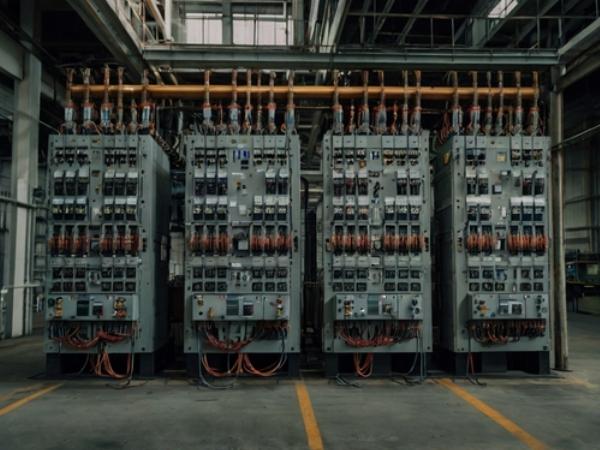Silicon carbide (SiC) has emerged as one of the most sought-after materials in recent years due to its exceptional properties, such as high thermal conductivity, electrical efficiency, and mechanical strength. These qualities make it ideal for high-performance applications in industries such as electric vehicles (EVs), renewable energy, aerospace, and electronics. As the world continues to focus on energy efficiency, sustainability, and technological advancements, the demand for silicon carbide is expected to rise dramatically, leading to significant growth in the silicon carbide market by 2031.
The silicon carbide market is poised for substantial expansion over the next decade, driven by increasing adoption across various high-growth sectors. In particular, power electronics have become one of the largest markets for silicon carbide. SiC’s ability to operate under extreme conditions, such as high temperatures and voltages, makes it a preferred material for power modules and semiconductor devices. These capabilities have positioned SiC as a crucial element for the automotive industry, especially in the development of electric vehicles, as well as for renewable energy applications.
Growth Drivers in the Silicon Carbide Market
One of the most significant drivers of the silicon carbide market is the rapid growth of the electric vehicle sector. As the automotive industry shifts toward cleaner and more sustainable alternatives, electric vehicles have gained widespread popularity. Silicon carbide plays a key role in this transition by improving the efficiency of power electronics used in EVs. SiC-based components, such as inverters, converters, and battery management systems, help reduce energy losses, thus improving the overall efficiency of electric powertrains. Additionally, the lightweight and high-efficiency characteristics of SiC allow EVs to achieve longer driving ranges and faster charging times—two critical factors that influence the adoption of electric vehicles.
SiC’s importance in renewable energy systems further fuels the market’s growth. Silicon carbide components are commonly used in solar inverters and wind turbines. In solar power systems, SiC can handle higher voltages and convert energy more efficiently, thereby increasing the overall performance of photovoltaic (PV) systems. With the global emphasis on transitioning to clean energy, the demand for high-performance, energy-efficient materials like silicon carbide will continue to rise in the renewable energy sector.
Moreover, silicon carbide’s ability to withstand harsh environments, including extreme temperatures and mechanical stress, has made it indispensable in the aerospace and defense industries. SiC is used in a wide range of applications, such as heat shields, jet engines, and satellite components. The aerospace sector's demand for lightweight, durable, and efficient materials is expected to contribute to the growth of the silicon carbide market as well.
Challenges Facing the Silicon Carbide Market
While the silicon carbide market presents significant growth potential, several challenges remain. One of the most prominent hurdles is the high production cost of silicon carbide. The cost of manufacturing SiC-based components is higher compared to traditional materials, such as silicon, due to the complex and energy-intensive production processes involved. As a result, the widespread adoption of silicon carbide in various industries has been somewhat limited by its relatively high price.
Another challenge is the limited availability of raw materials used in the production of silicon carbide. The material is primarily derived from petroleum coke and silica, which are subject to fluctuations in price and availability. This supply chain issue could impact the overall scalability of the market, especially as demand continues to grow. However, ongoing research into more efficient production techniques and alternative sourcing of raw materials may help alleviate these concerns over time.
Additionally, while silicon carbide is gaining traction in various industries, it is still a relatively new material in many applications. As such, there is a need for continued research and development to optimize its performance, particularly in areas such as power electronics and high-temperature applications. The ongoing evolution of manufacturing techniques, such as the development of chemical vapor deposition (CVD) and other advanced methods, will likely play a crucial role in making silicon carbide more cost-effective and accessible.
Regional Market Analysis
Regionally, the Asia-Pacific (APAC) region is expected to dominate the silicon carbide market by 2031. The rapid growth of electric vehicle adoption, particularly in China and Japan, combined with significant investments in renewable energy projects, will drive demand for silicon carbide-based components. In China, for instance, the government’s push for clean energy and green technologies has resulted in a booming electric vehicle market, where SiC-based power electronics are critical to improving vehicle performance and energy efficiency.
North America and Europe are also expected to see substantial growth in the silicon carbide market, driven by favorable government policies promoting clean energy technologies and electric mobility. In North America, the United States is leading the way in the development and adoption of electric vehicles, as well as renewable energy infrastructure, which will further boost demand for silicon carbide.
The European Union, with its Green Deal and strict emission regulations, is similarly pushing for more sustainable technologies, creating a favorable environment for silicon carbide in sectors like automotive, renewable energy, and industrial electronics.
Outlook for the Silicon Carbide Market by 2031
Looking ahead, the silicon carbide market is poised for significant growth as industries continue to embrace the material’s performance advantages. By 2031, the market is expected to reach new heights, with SiC playing an essential role in driving energy efficiency, sustainability, and innovation in sectors such as electric vehicles, renewable energy, aerospace, and industrial applications.
Ongoing advancements in manufacturing technologies and cost reduction strategies will likely make silicon carbide more affordable, further accelerating its adoption across multiple industries. As silicon carbide continues to offer transformative benefits, it is set to become a cornerstone material in the development of next-generation technologies, ultimately driving global efforts toward energy sustainability and technological progress.
With a solid foundation in place, the future of the silicon carbide market looks promising, and by 2031, it will likely play a critical role in the evolution of industries worldwide.
 Don't let your content be flagged with AI Detectors - use a Free AI Humanizer
Don't let your content be flagged with AI Detectors - use a Free AI Humanizer
 Don't let your content be flagged with AI Detectors - use a Free AI Humanizer
Don't let your content be flagged with AI Detectors - use a Free AI Humanizer


















